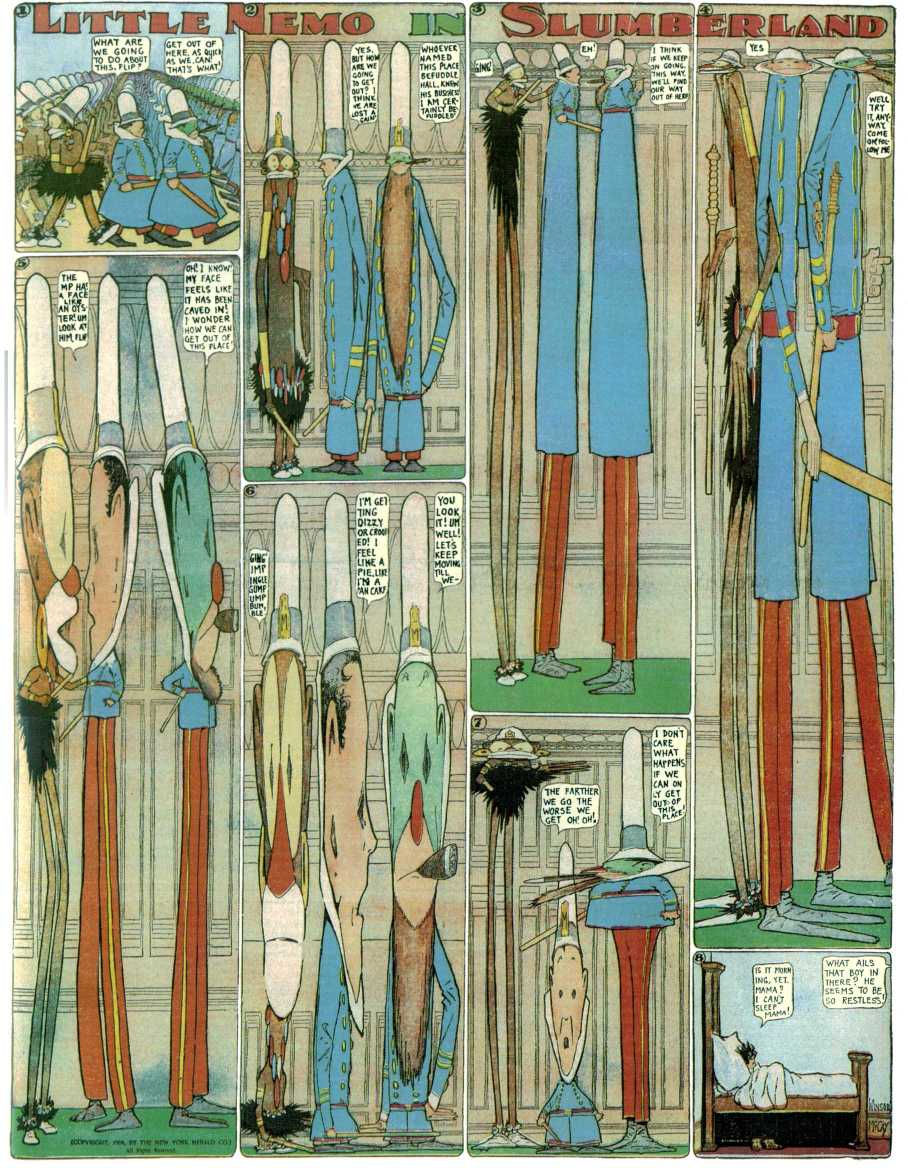Day #121: The Amazing Stretching Nemo
- Zachary J.A. Rondinelli

- Sep 25, 2020
- 3 min read
"Little Nemo in Slumberland" dated February 02, 1908:

Transcript of Tweets by @LittleNemo1905; Guest Curated by @Totter87 (SEPTEMBER 25, 2020):
Hi everyone, it’s me again - Chris Totten (@totter87) and I’ll be your guest curator for today, as Nemo and the gang continue exploring Befuddle Hall! - 1/21
If you missed my thread a few days ago introducing myself and the Befuddle Hall arc, you can check that out here: - 2/21
Yesterday, we saw McCay play with mirror effects like those found in amusement park funhouses. McCay would have been very familiar with these thanks to his history working in dime museums and his living close to Coney Island in New York. - 3/21
Today’s strip continues the hall of mirrors. Our heroes find their way out of yesterday’s conundrum, but soon enter another. - 4/21
Today’s core idea are distorting mirrors, where the viewer is either stretched tall or squished flat depending on how the mirror is bent. McCay pulls into his bag of layout tricks and brings the growing and shrinking panels back in what I think is one of its best uses. - 5/21
At first, only Impy seems to be aware that they are distorting while Nemo and Flip discuss how they are going to find their way out of Befuddle Hall. In fact, it’s not until the fifth panel that Nemo seems to realize what’s happening! - 6/21
It’s in this panel too that we learn that they can apparently feel this happening when Flip says that his face “feels like it has been caved in”, adding a sense of body horror to this scene. Befuddle Hall is turning out to be dangerous after all! - 7/21
Panel 7 is where McCay’s visual trickery reaches its climax. In the earlier panels you might be inclined to think that Nemo and his friends were just in another hall of mirrors (until they felt it), but here they distort in different ways while intersecting one another! - 8/21
Nemo hasn’t woken up from fear in a long time, but I think we can forgive him for going back to his old “OH! OH!” scaredy-cat ways here. This strip is visually impressive, but the more you read the dialog and think about what’s happening, the more terrifying it is. - 9/21
That is, if you can even read the dialog – McCay clearly drew the characters first and added the speech balloons where he could fit them. They’re tinier and hard to read even by Winsor McCay standards. - 10/21
Now, I’m not here to talk about body horror and tiny speech balloons though. I have 2 “meta” points to make about this comic. - 11/21
The first is that among his many visual explorations, something about this must have stuck with McCay. We’ve talked about how he sees potential in art to depict fantastical sights. He revisits distortion in his 1911 Little Nemo film to demonstrate animation’s potential. - 12/21
In that case, Nemo performs it as a magic trick, showing the audience how he, and by extension McCay, can manipulate the characters on the drawing board in amazing ways: - 13/21
The second point I have is exploring a storytelling aspect of McCay’s that I’ve found interesting in my own games work. In many ways, McCay’s comics work in much the same way that a good video game level does. - 14/21
McCay clearly has a huge imagination but his storytelling is very organized. When he is experimenting with the visual content or the layout of the comic, he focuses on one distinct innovation or visual trick at a time. Each strip has a “core mechanic” of sorts. - 15/21
This keeps that core visual element distinct, but also enables McCay to explore it. He already established this frame layout early in the comic’s run and explored it in several episodes. Here, he brings it back as a means to make the distorted mirror effect really shine. - 16/21
Meanwhile, McCay also employs heavy theming in many of the comics. Some of them have narrative and geographic continuity, but as we saw early on, McCay also has the freedom to ignore both and have Nemo appear in whatever setting he wishes. - 17/21
This is not unlike older video games (including the Little Nemo NES game itself) where individual levels could be themed and ignore the needs of geographic transitions. - 18/21
In Nemo for NES, each level has a distinct theme and is framed as a different dream, allowing the transition from forest, to garden, to toy land, and so forth without having to depict any kind of travel. It has the freedom to be un-geographic. - 19/21
In this way, McCay’s comic is very playful: he has given himself a conceit that allows for narrative continuity when he wants and geographic exploration at other times. - 20/21
That’s my reading of Little Nemo in Slumberland #121. What are your thoughts? - 21/21





Comments